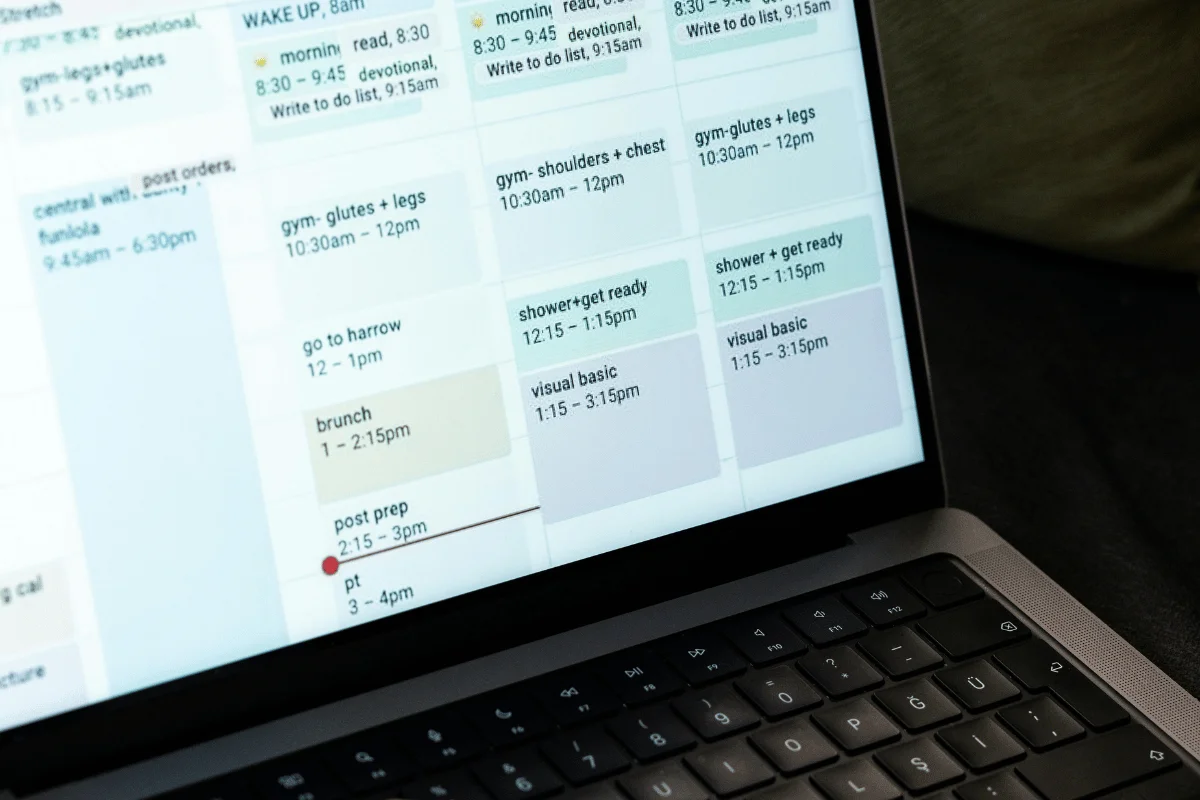Running a company takes a lot—managing directors handle big decisions, lead teams, and keep everything moving forward.
How do they manage it all?
Far from just answering phones, they tackle the nitty-gritty so the managing director can focus on leading the business.
What does that executive assistant to managing director partnership really entail? We’re about to break it down for you.
Oh, and if your own plate’s overflowing, ProAssisting might just save the day. Our ProAssistants are masters at easing the load—check out a free consultation to see how.
Benefits of Hiring an Executive Assistant to Managing Director
So, why bring an Executive Assistant for a Managing Director on board?
Simply put, it grants your MD a superpower – more time. This is especially important in industries like finance, where MDs are major revenue drivers and every minute counts.
Research confirms this value—managers typically lose up to 1.82 hours daily on low-value tasks like casual messaging, email management, and reviewing task lists.
In fact, the average manager spends only 1.83 hours per day (9.2 hours per week) on truly productive work!
An EA steps in to handle these necessary but lower-value tasks, allowing the MD to focus on high-impact priorities.
Here’s what you get:
- More Hours in the Day: An EA manages the nitty-gritty—think emails, meetings, and travel plans. This frees up the MD to tackle high-stakes stuff like sealing deals or plotting growth. In finance, where time equals money, this can mean millions more in revenue.
- One Go-To Person: Imagine having a single point of contact who filters everything. The EA decides what hits the MD’s desk and what can wait. Less noise, more focus—it’s a game-changer.
- Bigger Results: With the small stuff off their plate, MDs can pour energy into what they do best. A Gallup study of the entrepreneurial talents of 143 CEOs on the Inc. 500 list found that leaders who have high delegation talent effectively generate 33% more revenue!
Hiring an Executive Assistant supporting a Managing Director isn’t just a luxury—it’s a smart move that pays off big time.

Responsibilities of an Executive Assistant to Managing Director
It’s all about giving back time—plain and simple.
As Ethan and Stephanie Bull put it in The 29-Hour Work Day, the EA’s job is to lift the load off your shoulders, letting you focus on the big stuff while the EA handles everything else.
It’s not just about fetching coffee (spoiler: it’s never been about that)—it’s about being a real partner in the game.
The way we see it, an EA steps up by wearing a bunch of hats to support the MD. The book breaks it down into five “performance multipliers”:
1. Business Partner
An Executive Assistant as a Business Partner steps up to represent the Managing Director when needed:
- Attending meetings to take notes and collect action items when the MD can’t be present
- Providing input on marketing materials, presentations, and business decisions
- Acting as a sounding board for new ideas and strategies
- Offering unique perspectives based on their “fly on the wall” position in the company
- Building relationships with key stakeholders both inside and outside the organization
The EA has a front-row seat to how the MD runs the business, allowing them to become a “mini-me” when necessary and keep projects moving forward.
2. Chief of Staff
As Chief of Staff, the EA serves as the primary point of contact for the Managing Director:
- Filtering communications and determining what requires the MD’s personal attention
- Handling routine inquiries and redirecting requests to appropriate team members
- Following up on action items to ensure completion
- Facilitating debriefing sessions after important meetings
- Managing relationships with direct reports and other key personnel
This role saves countless hours by ensuring the MD only deals with matters that truly need their expertise and attention.

3. Project Manager
Taking ownership of projects is another way EAs multiply a Managing Director’s performance:
- Overseeing timelines, deadlines, and deliverables for company initiatives
- Coordinating with team members to ensure progress stays on track
- Handling logistics for events, retreats, or office relocations
- Managing the details of special projects from beginning to end
- Providing regular updates to keep the MD informed without bogging them down
EAs free the MD to focus on strategic decisions rather than getting lost in details by handling the day-to-day management of projects,
4. Assistant/Scheduler
The traditional role of calendar management becomes a strategic advantage when done well:
- Mastering “calendar Tetris” – fitting in priorities while respecting the MD’s energy patterns
- Creating detailed meeting briefs with background information on participants
- Building in travel time between appointments and protecting focus time
- Sending daily, weekly, and monthly schedule summaries
- Managing the MD’s inbox, categorizing emails by priority, and handling routine responses
A great EA knows when the MD is most productive and schedules accordingly. They ensure time is used optimally throughout each day.
In a world where executives spend nearly 23 hours a week in meetings (up from less than 10 hours in the 1960s), this keeps the MD’s day on track—no chaos, just results.
5. Personal Assistant
The personal assistant role often blends with professional responsibilities:
- Handling personal scheduling like doctor appointments or family obligations
- Researching travel options and coordinating personal trips
- Managing home services or vendor relationships
- Purchasing gifts for family members or business contacts
- Coordinating personal events or celebrations
The EA helps maintain work-life balance and ensures personal matters don’t become distractions during business hours.
The most effective EAs seamlessly move between these five performance multipliers throughout their day.

Skills for an Executive Assistant to a Managing Director
The most effective EAs possess a powerful blend of both hard and soft skills.
In fact, we believe the ideal ratio is 51% soft skills to 49% hard skills—with those soft skills being slightly more important.
A great EA combines technical abilities with exceptional interpersonal talents to become a true performance multiplier for their Managing Director:
- Communication Skills: An EA must write clear, concise emails that represent the Managing Director professionally. They need to speak confidently with everyone, from entry-level employees to board members, and master the “velvet no”—declining requests in a way that makes people feel respected. Great EAs think through what they want to say before replying, offering solutions rather than just questions.
- Technical Proficiency: Today’s EA needs to manage complex calendars across multiple platforms, create professional presentations, work with spreadsheets, and adapt quickly to new software. While specific program knowledge can be learned, the ability to pick up new systems quickly is essential for top-performing EAs.
- Anticipation and Proactivity: This is the superpower of ESP (not mind-reading, but excellent situational preparation). It means thinking several steps ahead, researching people before meetings, gathering materials for presentations before being asked, and remembering preferences to apply them consistently.
- Discretion and Trustworthiness: Managing Directors share sensitive information with their EAs daily. Maintaining absolute confidentiality, exercising good judgment about what information to share, handling financial access with integrity, and building trust through consistent reliability are all crucial. Trust is the foundation that allows EAs to take on more responsibility.
- Emotional Intelligence: The high-touch hospitality mindset that promotes an EA from good to exceptional includes reading the room and adjusting approach, understanding when the MD needs space versus support, handling difficult personalities with grace, and maintaining composure under pressure. This high-touch approach ensures that everyone feels valued and respected.
- Adaptability and Resilience: Great EAs shift priorities smoothly as business needs evolve, handle last-minute changes without becoming flustered, bounce back quickly from mistakes, and maintain a positive attitude during stressful periods.
These skills are as important in a remote executive assistant and part-time remote executive assistant role as they are in an in-house role!

How an Executive Assistant Impacts the Managing Director’s Productivity
How an Executive Assistant impacts a Managing Director’s productivity is fundamentally about giving back time and focus.
As Ethan explains, “a Managing Director in an organization, specifically in finance, is a very important, very high-level revenue producer of the organization. The more that an Executive Assistant can give that Managing Director back focus and time to put efforts to revenue generation, the more money the firm will make.“
This productivity enhancement happens through:
- Time Reclamation: Managing Directors often spend significant time on tasks that don’t directly generate revenue. A skilled EA can reclaim this time by managing email correspondence, handling calendar conflicts, preparing meeting materials, and processing administrative paperwork.
- Focus Enhancement: By serving as a gatekeeper, the EA helps the Managing Director focus on high-value activities. This includes screening calls and visitors, prioritizing requests, creating blocks of uninterrupted time for deep work, and handling routine matters independently.
- Decision Support: EAs help Managing Directors make better decisions by gathering necessary information from various sources, organizing data in a digestible format, and creating systems to streamline recurring choices.
- Workflow Optimization: A good EA establishes efficient systems for the Managing Director, including standardized processes for routine activities, effective filing and information retrieval, templates for everyday communications, and reminders for follow-up items.
- Relationship Management: The EA extends the Managing Director’s capacity by maintaining professional relationships, ensuring timely follow-up with clients and stakeholders, representing the Managing Director when appropriate, and managing commitments made.
The cumulative effect of these interventions is the formula to increase your productivity.

How to Hire the Right Executive Assistant
Ready to find the perfect Executive Assistant for a Managing Director?
Here are the things you should look out for:
- Check Their Track Record: Experience counts in the executive assistant role. Look for someone who’s worked at least 5 years in the industry with a high-level executive—they’ll get the pace and stakes.
- Spot the Soft Skills: EQ, communication, and professionalism aren’t on a resume—they show up in person. Chat with candidates to see if they’ve got that spark. Can they handle your toughest stakeholders?
- Test Adaptability: Ask about a time they switched gears fast—like rescheduling a packed day. The best EAs thrive in chaos, not just order.
- Build Trust Early: Trust is everything. Start with small tasks—scheduling, updates—and see how they deliver. Consistency here sets the stage for bigger roles down the line.
Not sure where to start? Companies like ProAssisting take the guesswork out of finding elite executive support.
We offer highly experienced ProAssistants (with 5+ years of experience) at a fraction of the cost of hiring in-house.
Our rigorous vetting process admits less than 5% of applicants, ensuring you partner with someone who has the skills, experience, and temperament to support a Managing Director effectively.
Schedule a free consultation to discuss your specific needs and determine if remote executive support is the right solution for your situation.

Frequently Asked Questions (FAQs)
Let’s address some common questions about Executive Assistants supporting Managing Directors.
What Qualifications Are Required to Become an Executive Assistant to a Managing Director?
Usually the Managing Director title is common across various industries. A Managing Director will typically want to see previous relevant experience supporting high-level executives.
Beyond that, candidates should be top-level Executive Assistants who cover the five performance multipliers.
They should leverage their emotional intelligence to guide their soft skills, demonstrate poise and empathy, and communicate in a very professional manner.
How they present themselves and your organization should reflect the high standards you expect in all business relationships.
What Are the Key Personality Traits That Make a Great Executive Assistant?
Key personality traits for executive assistants include:
- Being type A in terms of personality
- Having a strong work ethic
- Being able to assimilate and work with many different kinds of people—whether they are technical, in sales, or leadership
- Presenting themselves, you as their principal, and your organization in a positive light
What Are The Most Common Tools an Executive Assistant Should Master?
As a busy executive, you should expect your EA to be proficient with email, contacts, and calendar management—these are the key foundational tools of their work, whether they’re in office or remote.
Your EA should also be adaptable in learning the specific tools that you prefer to use.
Great Executive Assistants are usually very good at getting up to speed quickly with various technologies and meeting you where you are in terms of the tools you’re comfortable with.
How Can I Build Trust with the Managing Director as Their Executive Assistant?
Building trust is the most important part of the relationship between you and your Executive Assistant.
Given the inherent imbalance between principal and assistant, your EA should focus on doing all the little things correctly for an extended period without mistakes.
These include managing your schedule meticulously and keeping you informed of any changes to appointments, priorities, or needs from prospects and clients.
As your EA consistently demonstrates reliability on these fundamental tasks, you’ll likely feel more comfortable assigning them higher-level responsibilities and projects that you might not have trusted them with initially.
This gradual expansion of duties is the natural progression of a successful executive-assistant relationship.
Conclusion
Finding the right Executive Assistant can transform how you work as a Managing Director. The perfect match creates a partnership that adds hours to your day and helps you focus on what truly matters.
If you’re ready to experience these benefits without the overhead of a full-time hire, ProAssisting offers a solution. We pair you with top-notch, US-based Executive Assistants who bring experience from globally recognized brands like J.Crew, Fidelity, and Target.
Starting at just $3,000 per month, you’ll save 50-80% compared to hiring in-house while receiving the same exceptional support with a 1:3 client ratio!
ProAssistants respond within an hour during business hours and provide after-hours support when you’re traveling. With 80% of your retainer going directly to your ProAssistant, they focus on quality service rather than chasing additional clients.Ready to save time, money, and your sanity? Take the first step toward simplifying your work life with ProAssisting!

